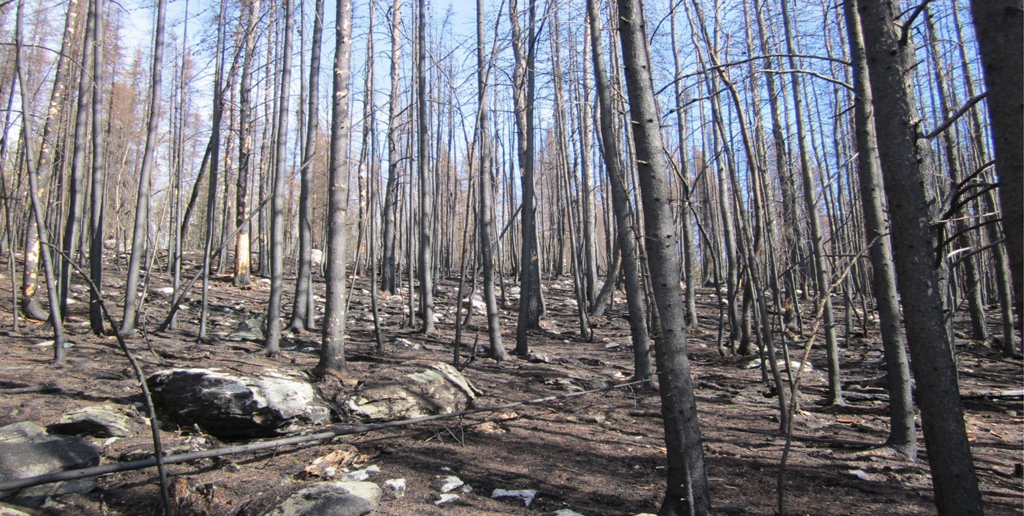
The Richardson Lake gold property historically produced 140,000 oz. of gold. It is about 100 km northeast of the Campbell mill facility belonging to Evolution Mining (ASX: EVN). Adjacent to Richardson Lake is the Richardson North Extension property (including the historic Kostynuk Brothers mine), and nearby is the Western Fold property (optioned to NewRange Gold (TSXV: NRG; US-OTC: NRGOF)).
AurCrest followed up on gold discoveries made in 2012 and 2014 on the Richardson Lake and Richardson North Extension properties, but no diamond drilling results have been published.
The Ranger Lake gold property is even closer to the Campbell mill, only 8 km away, and includes the contiguous Ranger East property. The company concentrated its effort on this project in 2021, diamond drilling nine holes or 1,683 metres.
In June, AurCrest announced that mineralization appears to be associated with intense biotite-silica-carbonate alteration in a 225-metre east-west trend that is open to the east and west. Sulphide stringers and veins up to 20 cm thick were noted to occur in broad zones up to 7 metres along the core length.
Two step-out holes were sunk about 25 metres to the east from a single drill pad. Hole RAL21-004 intersected sporadic disseminated sulphides and millimetre-scale sulphide stringers between 136 and 147 metres in a zone of strongly sheared and folded silica-biotite-calcsilicate-sulphide layers between 145 and 147 metres. Drill hole RAL21-004B intersected intermittent sulphide mineralization between 6 and 23 metres. Both holes encountered zones of high (80%) sulphides and fine-grained disseminated sulphides.
AurCrest is planning a second phase of drilling this fall to test alteration, mineralization and structural interpretations. The target area was identified by artificial intelligence northwest of the current drilling.
AurCrest Gold has a market capitalization of C$16.6 million.
Clean Air Metals (TSXV: AIR; US-OTC: CLRMF) is hunting platinum and palladium at its flagship Thunder Bay North project in Ontario. The property is 100% owned, and 65 km southeast of the Lac Des Iles palladium mine recently acquired by Impala Platinum Holdings of South Africa.
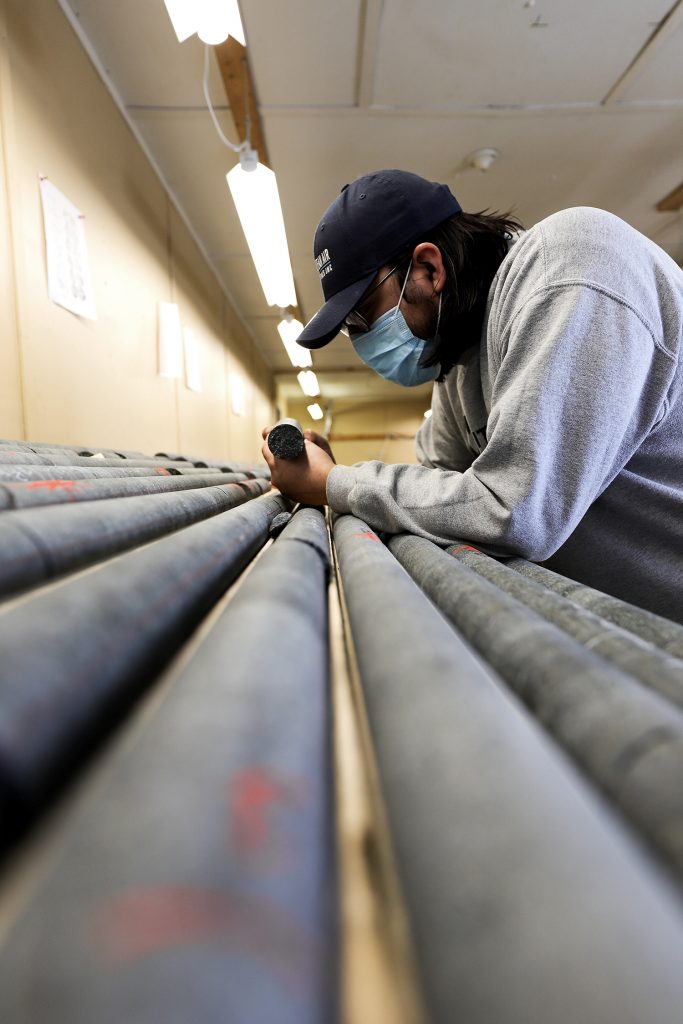
Over 800 holes have been drilled at Thunder Bay North, enough to update the 43-101 compliant resource estimate for the Escape Lake and Current Lake deposits in January. Both contain platinum group and precious metals as well as cobalt, copper and nickel.
Indicated resources at Current Lake are 12 million tonnes grading 1.48 grams platinum per tonne and 1.40 grams palladium per tonne for 2.2 million contained oz. of platinum-equivalent or 1.3 million oz. palladium-equivalent. The Escape Lake deposit hosts 4.3 million indicated tonnes averaging 0.92 gram platinum per tonne and 1.18 grams palladium per tonne, for 3.1 million oz. contained platinum-equivalent or 505,369 oz. palladium-equivalent.
The Current Lake inferred resource is 6.4 million tonnes grading 0.58 gram platinum per tonne and 0.65 gram palladium per tonne, containing 700,621 oz. of platinum-equivalent or 416,810 oz. palladium-equivalent. The Escape Lake inferred resource stands at 3.4 million tonnes averaging 0.64 gram platinum per tonne and 0.73 gram palladium per tonne, for 414,932 oz. platinum-equivalent or 246,850 oz. palladium-equivalent.
Taken together, both deposits are estimated to contain as much as 4.2 million oz. platinum-equivalent or 2.5 million oz. palladium-equivalent.
Clean Air has also drilled what it says are Norilsk-style nickel-copper massive sulphides 350 metres north of the Escape South high-grade zone, and mounted a 15,000-metre drill program to find out more.
In August the company released assay results that included 13 metres grading 0.96 gram palladium per tonne and 1.03 grams platinum per tonne, 0.30% copper and 0.25% nickel, and 3 metres grading 1.96 grams palladium per tonne and 2.21 grams platinum per tonne, 0.51% copper, and 0.26% nickel in hole CL21-004, part of the Current Lake infill program. At Escape Lake, drill hole ELR21-070 intersected 8 metres grading 1.25 grams palladium per tonne and 1.15 grams platinum per tonne, 0.43% copper, and 0.20% nickel.
Baseline and archaeologic data collection are underway at Thunder Bay North in preparation for a preliminary economic assessment due by the end of this year. The PEA will be based solely on the Current Lake deposit.
A revised Escape Lake resource estimate is being prepared for release early next year.
Clean Air Metals has a market cap of C$33.8 million.
Generation Mining
Generation Mining’s (TSX: GENM; US-OTC: GENMF) flagship property is the Marathon palladium-copper project near the northern Ontario town of the same name. A feasibility study was produced last year, and the company says mining could begin as early as 2024.
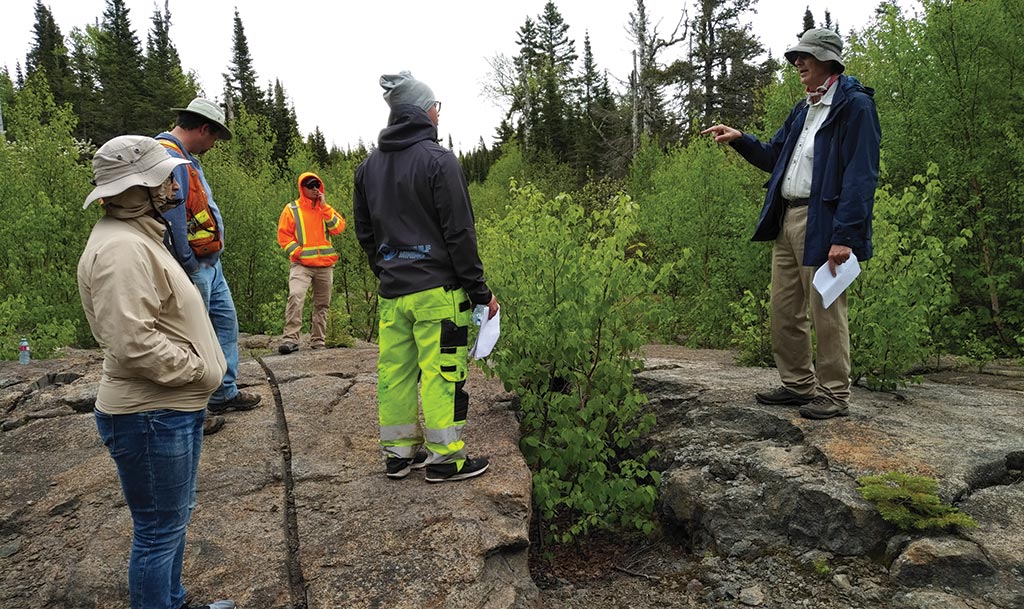
The project has three deposits —Marathon, Geordie and Sally — that are mineable with open-pit methods. They are believed to host 4.2 million oz. of palladium, 1.1 billion lb. of copper, and 1.4 million oz. of platinum in the measured and indicated category. The measured and indicated resource is 244.9 million tonnes grading 0.53 gram palladium per tonne and 1.1% copper.
Within the measured and indicated tonnage are proven and probable reserves of 117.7 million tonnes grading 0.619 gram palladium per tonne and 0.205% copper, plus payable gold, silver and platinum. The inferred material is 33.8 million tonnes grading 0.4 gram palladium per tonne and 0.22% copper.
According to the feasibility study, output will peak in the first full year of operation at 220,000 oz. payable palladium and 52 million lb. copper. Expressed as palladium-equivalent production, the average annual output would be 245,000 oz. over the thirteen year life of the mine.
Operating costs for the Marathon project are estimated at C$23.63 per tonne milled over the life of the mine. The base case after taxes generates an undiscounted cash flow of C$2.1 billion, a net present value at a 6% discount rate of C$1.1 billion, and an internal rate of return of 29.7%.
Capital costs over the life of the mine would be C$1.1 billion, made up of C$665 million pre-production costs (including equipment financing drawdowns) and C$423 million sustaining capital. The payback of initial capex would be 2.3 years. Closure costs are estimated at C$66 million. Generation is working with Endeavour Financial to help arrange funding for construction.
Generation Mining’s 8,000-metre exploration program was interrupted this summer by forest fires. Work has resumed, and multiple intercepts of up to 2.4 grams palladium per tonne, 1.72 grams platinum per tonne and 0.12 gram gold per tonne have been made over 4 metres within a broad zone of disseminated platinum group-copper mineralization.
Generation Mining owns an 82.6% interest in the Marathon project and Sibanye-Stillwater (NYSE: SBSW; US-OTC: SBYSF) owns the balance. Sibanye has elected not to increase its interest in the project.
Generation has other projects scattered across Canada. These include the Davidson molybdenum deposit in British Columbia, the Alberta zinc property, the Rawdon claims in Nova Scotia, and the Darnley Bay gravity anomaly in the Northwest Territories.
Generation’s market capitalization is C$138 million.
Great Bear Resources
Great Bear Resources (TSXV: GBR; US-OTC: GTBAF) owns 100% of the Dixie gold project, 24 km southwest of Red Lake, Ontario. The company has a regional exploration budget this year of C$45 million, one of the largest in the country. Having raised C$70 million earlier this year, Great Bear’s drill campaign is fully funded.
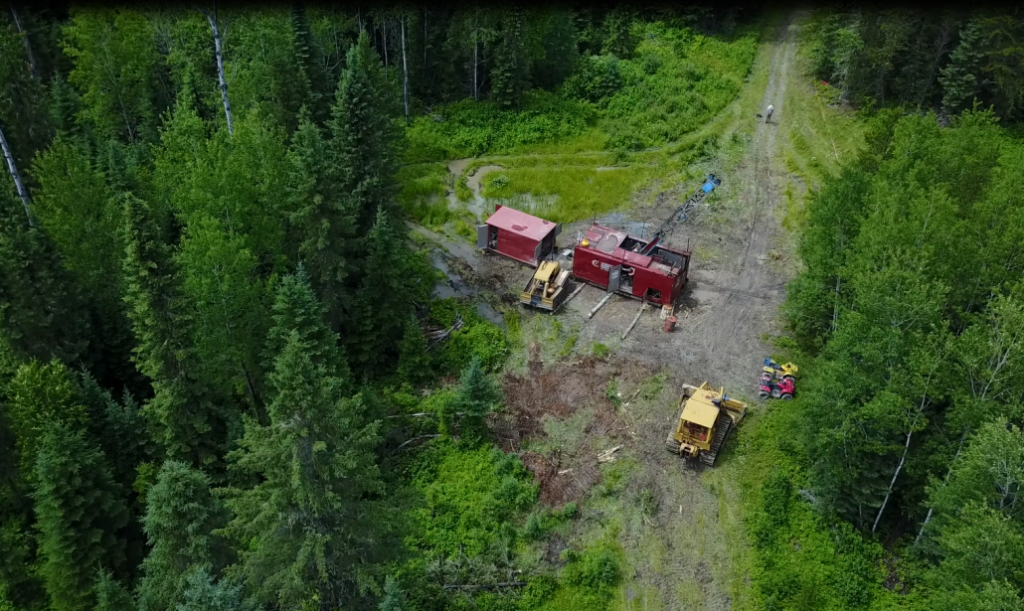
There are two principal styles of gold mineralization at Dixie. First is high-grade gold in quartz veins and silica-sulphide replacement zones (Dixie Limb, Hinge and Arrow) typical of the ore mined throughout the Red Lake camp. Second is high-grade disseminated gold with broad moderate to lower grade envelopes (LP fault). The dominant gold hosting stratigraphy of the second style consists of felsic sediments and volcanic units.
The first phase of drilling is nearly complete this year, including over 40,000 metres in 440 holes at the LP fault to an average depth of 450 metres along 4 km of strike length. The strike length was extended in both directions to the northwest, with the intersection of 43.1 metres grading 3.83 grams gold per tonne, including 4.8 metres grading 28.18 grams gold per tonne, and to the southeast with 8.25 metres grading 5.9 grams gold per tonne, including 0.6 metre grading 64.3 grams gold. Great Bear says it has confirmed continuous bulk tonnage gold mineralization along more than 3 km of strike length at the LP fault, and it remains open.
Phase two drilling has begun with infill and expansion drilling of the LP fault, as well as the Hinge, Limb and Arrow zones. The company is also testing new regional targets nearby.
The company completed a 43-101 compliant technical report early last year for the Dixie project, and expects to release its first resource estimate no later than the first quarter 2022.
Great Bear Resources has a market cap of C$771.9 million.
New Age Metals (TSXV: NAM; US-OTC: NMTLF) owns 100% of the River Valley palladium project, located 100 km northeast of Sudbury, Ontario. The platinum group metals (PGM) and copper sulphide deposit was discovered in 1999, and the company says it has invested about $40 million in the project so far.
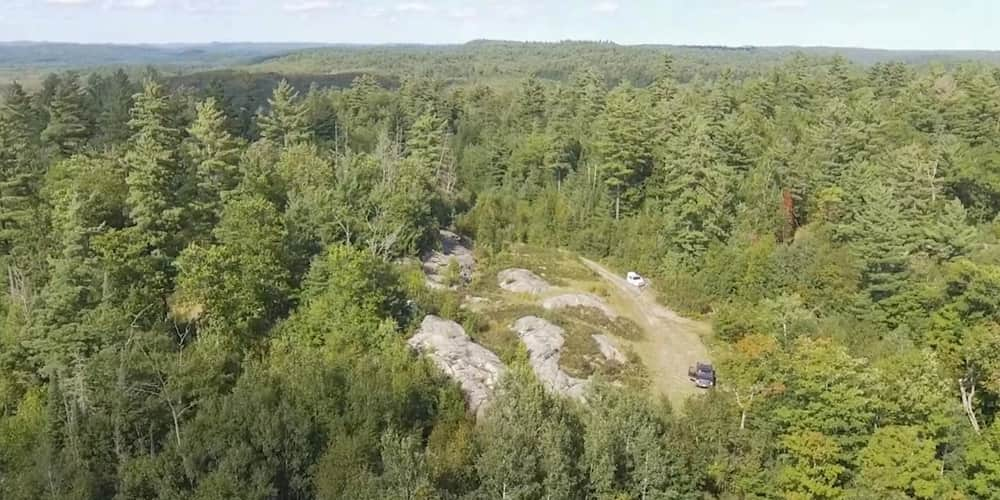
The company filed a preliminary economic assessment in 2019 and plans to release a prefeasibility study early next year. The PEA outlined a 20,000 tonne-per-day operation over 14 years, producing 119,000 oz. palladium-equivalent annually. The preproduction capital requirement is C$495 million. The after-tax numbers include a net present value (at a 5% discount rate) of C$138 million and an internal rate of return of 10%.
The measured and indicated resource used in the PEA was 99.3 million tonnes grading 0.52 gram palladium per tonne and 0.20 gram platinum per tonne, 0.06% copper, and 0.02% nickel. That is a platinum-equivalent grade of 0.9 gram per tonne. In situ metals were estimated at 2.9 million oz. palladium-equivalent, 121.7 million lb. copper, and 34.7 million lb. nickel. The 52.3 million inferred tonnes have lower PGM grades and the same base metal grades, and the contained metal in this category is 1.1 million oz. palladium-equivalent, 46 million lb. copper and 23 million lb. nickel.
Mineralization is known to extend over 16 km, remaining open to the east and at depth.
New Age says the prefeasibility study will use more tightly constrained models for mineralization, and state-of-the-art processing techniques to increase metal recoveries. Rhodium will also be included as a payable metal. An open-pit operation is anticipated.
New Age also owns 100% of the Genesis PGM-copper-nickel project in Alaska. Known mineralization covers a nine-km strike length, reef-style target. The project is drill-ready, and the company is seeking a potential joint-venture partner.
The company’s lithium division has several wholly-owned spodumene deposits in Manitoba, giving them potential access to a low-cost source of lithium hydroxide for electric vehicle batteries. Again, it is seeking partners.
New Age has a market cap of C$21.7 million.
Pacton Gold
Pacton Gold (TSXV: PAC; US-OTC: PACXF) is engaged in high-grade gold exploration in Ontario’s Red Lake district, where such targets abound. It is drilling 10,000 metres this year as a follow up to its 2019 field program.
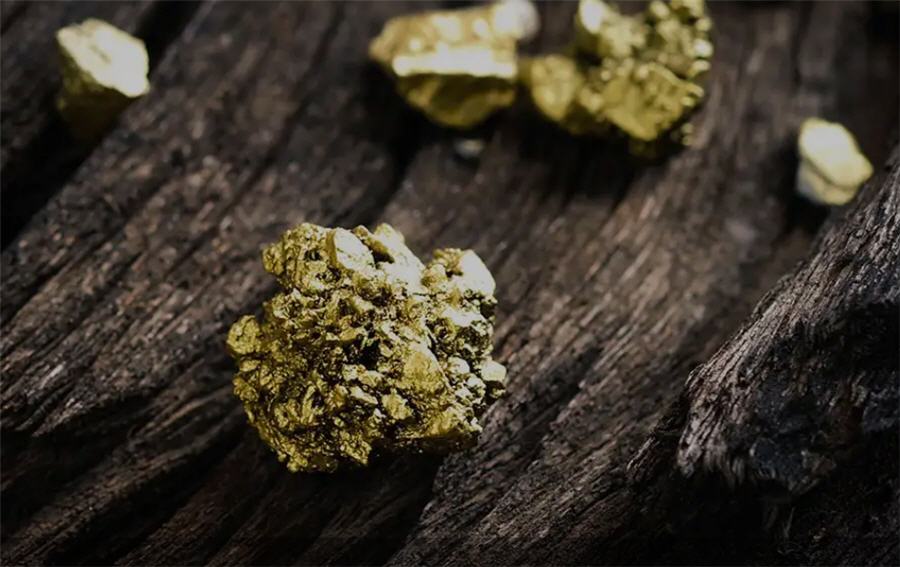
Two years ago, a reconnaissance hole assayed 17.5 grams gold per tonne over 0.5 metre. Surface samples yielded 126.5 grams gold per tonne and 23.3 grams gold per tonne. Historical sampling and trenching uncovered 133 grams gold per tonne.
The company’s Red Lake gold project is located between the former Madsen mine (now re-opened as Pure Gold by Pure Gold Mining (TSXV: PGM; US-OTC: LRTNF), Evolution Mining’s (ASX: EVN) Red Lake mine and the Dixie discovery of Great Bear Resources (TSXV: GBR; OTC: GTBAF).
Pacton completed a drill program last winter at the Red Lake project, but results have been delayed severely by the impact of Covid-19 on the assay labs. The company says the next round of drilling will begin by the end of the year if it hasn’t already.
More advanced is the Sidace Lake property, 28 km north of Red Lake. This is a joint-venture between Pacton (39.5% owner and the operator) and Evolution Mining (60.5%). Pacton acquired its share of the project in April 2020 from TomaGold (TSXV: LOT).
Pacton is testing multiple targets with an 11,500-metre drill campaign as all zones are open along strike and at depth. Results from the first phase of drilling this year included 2.3 metres grading 9 grams gold per tonne; 30.9 metres grading 1.3 grams gold per tonne; 75.2 metres grading 1.3 grams gold per tonne, including 5.2 metres at 4.5 grams gold; 61.2 metres grading 1.5 grams gold per tonne, including 3 metres at 4.7 grams gold; and 1 metre at 10 grams gold per tonne.
Geological modelling has confirmed the continuity of mineralization at Sidace.
Pacton also has a portfolio of gold properties in Australia’s Pilbara region. It owns 100% of the properties, consisting of unconsolidated gold-bearing gravel and conglomerates with historic mining, known as the prospective Egina property. The company recently sold its interests in the Yandicoogina and Boodalyerrie projects to Raiden Resources (ASX: RDN).
In addition, Pacton owns 40% of the Carpenter Lake uranium joint-venture (60% ALX Resources (TSXV: ALX)) on the southern rim of the Athabasca Basin in northern Saskatchewan.
Pacton Gold has a market capitalization of C$21.1 million.
Trillium Gold
Trillium Gold (TSXV: TGM; US-OTC: TGLDF) says it has a portfolio full of potential in the Red Lake and Kirkland Lake camps. The company is determined to explore its properties for deep Archaean gold deposits that yielded both past and present gold production. Deposits such as Macassa in Kirkland Lake and Campbell in Red Lake are now being minedto depths of 2,000 metres below surface.
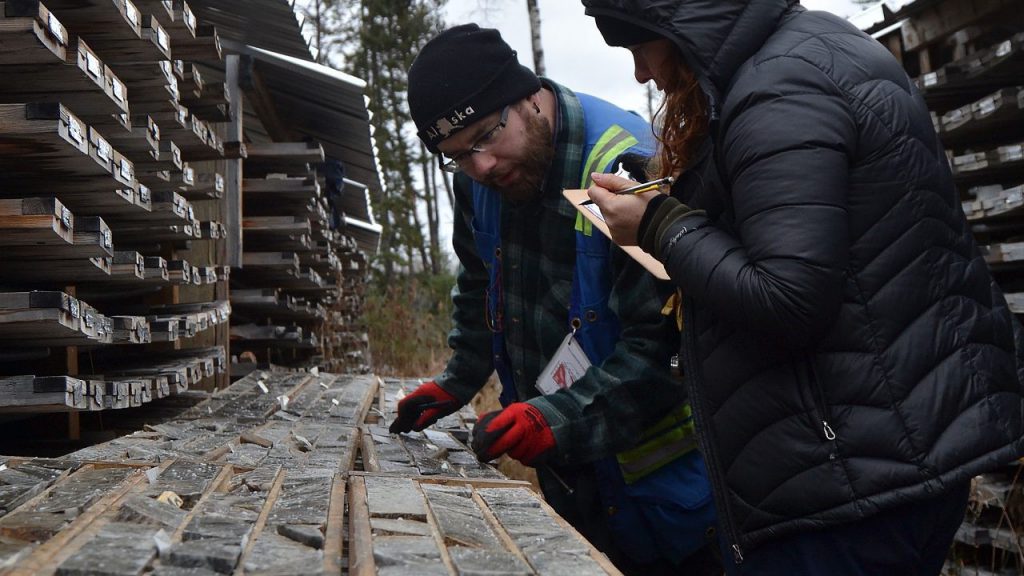
Trillium is concentrating its efforts on the wholly owned Newman Todd gold project near Red Lake, which has been only tested to 400 metres below surface. The property was last drilled in 2011 and 2012. That work identified a zone of high-grade mineralization along the Newman Todd structure. High grades were found at surface, as well. Trillium began its own drilling in 2020 and intersected visible gold and broad zones of anomalous gold mineralization when it drilled perpendicular to historical drilling. This confirmed to Trillium the presence of vein style mineralization.
The company reported assays from Newman Todd in May with highlights of 23.33 grams gold per tonne over 1.5 metres from 433 metres; 39.93 grams gold over 0.6 metre from 498.4 metres; 5.84 grams gold over 2.7 metres from36.9 metres; 4.65 grams gold over 0.4 metres starting from 175.9 metres; 5.10 grams gold over 0.3 metre from 346.3 metres; 66.4 grams gold over 1 metre from 169 metres; and 6.21 grams gold over 0.8 metre from 406.2 metres.
Trillium also owns 100% of the adjacent Newman Todd West (formerly Rivard) property. Under the former owner, it produced modest amounts of gold from small pits and trenches. The first three holes drilled this year assayed 129.79 grams gold per tonne over 1.3 metres, including 561 grams gold over 0.3 metre at 13 metres; and 9.58 grams gold over 0.8 metre, including 23 grams gold over 0.3 metre from 40.8 metres. Trillium plans to continue drilling to identify high-grade gold veining.
The Gold Centre property is also located in the Red Lake camp. Trillium has optioned an 80% interest in the project and created a joint venture with owner Rupert Resources (TSXV: RUP; US-OTC: RUPRF). The property is adjacent to Evolution Mining’s (ASX: EVN) Red Lake mine, and underground development there is only 350 metres from the Gold Centre boundary.
Trillium is drilling 8,000 metres at Gold Centre and has intersected the Huston-Balmer assemblage contact at 521 metres. The mine stratigraphy corridor below the contact is next to be tested.
Also in the Red Lake gold camp, Trillium owns 100% of several properties in the early stages of exploration such as mapping and sampling (Leo, Western Bear, Karas Lake, Gerry Lake, and Satterly Lake, Swain Lake).
Trillium has other Red Lake properties with copper-zinc potential (Sydney Lake, Moose Creek, Caribou Creek, Copperlode, Lucky, Fly, Moth, Joy, Copperlode East, and Pakwash).
The company also owns 100% of 14 claims in the Larder Lake area; the Shining Tree property in the Kirkland Lake camp; and the Southwest Fenelon, Jamesie and Opawica claims in Quebec.
Trillium Gold has a market capitalization of C$27 million.
White Metal Resources (TSXV: WHM; US-OTC: TNMLF) has land packages in Namibia (Taranis-Okohongo and DorWit copper-silver); in Newfoundland (Startrek gold-antimony); and in Ontario (Pen gold, Umex copper-nickel, Seagull JV platinum-copper, Far Lake JV copper-silver, Iris Lake gold, West East Vanguard gold-copper, and its flagship Tower Stock gold).
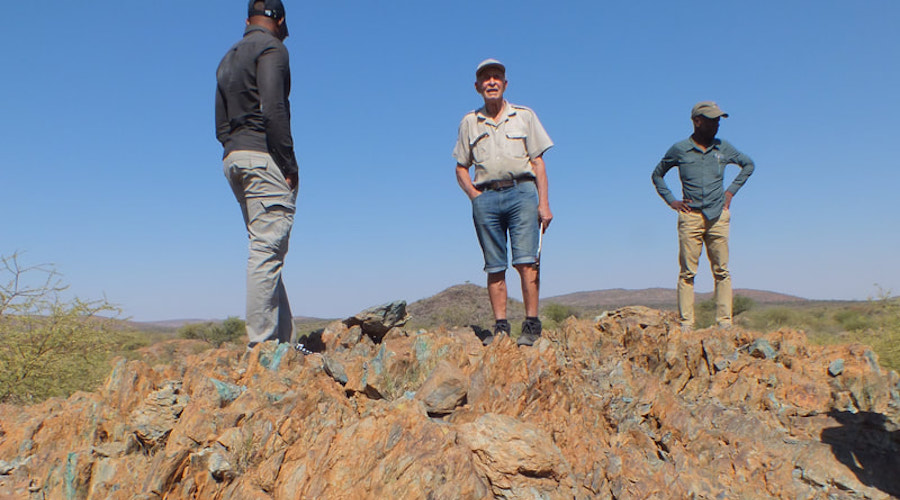
The Tower Stock project is 40 km northwest of Thunder Bay, Ontario. White Metal has the option to acquire 100% of the project by paying the vendor 1.2 million common shares and making cash payments totalling $145,000 over three years.
The first phase of drilling was completed early this year. The presence of low-grade gold mineralization in an intense alteration zone was confirmed over a 2-km strike length. Drilling also discovered the new Ellen high-grade gold zone, which is open in all directions. The newly discovered zone returned 82.5 metres grading 1.7 grams gold per tonne, including 45 metres grading 3 grams gold and 1.5 metres grading 59.9 grams gold. In August, White Metal expanded the Ellen zone with step-out drilling that assayed 3.68 grams gold per tonne over 10.5 metres, including 19.9 grams gold over 1.5 metres.
In May, the strike length of the Bench zone at Tower Stock was extended to 2.1 kilometres. Hole TM-21-97 returned 52.5 metres grading 0.32 gram gold per tonne and 36 metres grading 0.62 gram gold, including 13.5 metres at 1.04 grams gold, and 22.5 metres grading 0.5 gram gold per tonne, including 3 metres at 1.15 grams gold.
Drilling will continue at the Ellen zone, as well as the Bench and South zones.
Two other Ontario properties, Vanguard and Seagull Lake, are high on White Metal’s list. The Vanguard property, 110 km west of Thunder Bay, has non-compliant historical resources of 200,000 tonnes grading 1.3% copper, 2% zinc and 8.6 grams gold per tonne in the West zone. The East zone has another 100,000 tonnes grading 1.8% copper, 3.4% zinc, 6.8 grams silver per tonne and 5.0 gram gold per tonne. White Metal is compiling the historical data to determine diamond drill hole targets.
The company considers the Seagull Lake platinum group-copper-nickel property, 100 km north of Thunder Bay, highly prospective. Historic drilling at Seagull Lake turned up 2.1 metres grading 3.6 grams platinum-plus-palladium per tonne, 0.34% copper, 0.21% nickel and 16 metres averaging 1.04 grams platinum-plus-palladium per tonne, 0.14% copper and 0.16% nickel. The mineralization also contains anomalous concentrations of rhodium, iridium, osmium and ruthenium.
The company says both the Vanguard and Seagull Lake properties are available, as is the Pen gold property, for option. The Far Lake copper-gold property in Ontario and the Startrek gold-antimony property in Newfoundland are already optioned out with a carried interest for White Metal.
In addition, the company has interests in two copper-silver exploration properties in Namibia. The Taranis-Okohongo project has a 43-101 compliant indicated resource of 7.7 million tonnes grading 1.55% copper and 26.77 grams silver per tonne, at a 0.3% copper cut-off grade. The inferred resource contains 119,256 tonnes of copper and 6.6 million oz. of silver.
The DorWit project in southern Namibia is optioned to Noronex (ASX: NRX), which can earn up to a 70% interest. Drilling is about to get underway targeting a contained copper resource of 300,000 tonnes. The JORC-compliant resource estimate released earlier this year outlined 2.9 million indicated tonnes grading 1.4% copper and 10 million inferred tonnes grading 1.2% copper.
White Metal Resources has a market cap of C$11.6 million.
(This article first appeared in The Northern Miner)




